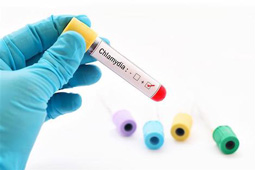Study shows knowledge of STI has little effect on risky sexual behavior

Photo courtesy of: CHSPThe Reproductive and Sexual Health Initiative is an interdisciplinary working group comprised of health care professionals and university faculty.
Eighty-five percent of a sample of college students report engaging in risky sexual behavior and the knowledge of the risk of sexually transmitted infections (STI) seemed to have little to no effect on the behavior, according to a study by Ohio University’s Reproductive and Sexual Health Initiative (RSHI).
RSHI is an interdisciplinary working group comprised of faculty and professionals in the College of Health Sciences and Professions (CHSP), the Heritage College of Osteopathic Medicine, OhioHealth O’Bleness River Rose Obstetrics & Gynecology and Rio Grande University.
Caroline Kingori (PhD, MPH), Zelalem Haile (PhD, MPH) and Tania Basta (PhD, MPH) — RSHI’s core faculty — developed the initiative in collaboration with a local healthcare organization in Athens to conduct the study with the background that incidence of STI has increased across the country among young adults.
Examining the association between knowledge of STI and risky sexual behavior, defined as having oral, vaginal and/or anal intercourse without a barrier method, a group of 200 college students participated in the study at a local clinic. The participants were asked to complete an online questionnaire presented by research assistants while they waited to be attended to by a health care provider.
The results showed no statistically significant difference in STI knowledge scores between participants who reported engaging in risky sexual behavior and those who did not.
Kingori, an assistant professor in CHSP and co-founder of RSHI, called the results of the study “shocking” in that students still engaged in risky sexual behavior regardless of the knowledge base on the diseases.
A Master of Public Health graduate student and a Community and Public Health undergraduate student worked on the ongoing study as research assistants. They assisted with data collection and reporting. The research team hopes to expand the study to eventually include 1,000 participants.
“This will allow for a preplanned subgroup analysis to determine whether the observed lack of difference in STI knowledge by risky sexual behavior is consistent across certain subgroups,” said Haile.
Among sexually transmitted infections, the most prevalent are chlamydia followed by gonorrhea and syphilis.
“This study is critical to determining the best strategies to reach out to our students,” said Kingori.
According to OHIO’s Division of Student Affairs, the University’s certified peer health educator group POWER/Gamma presented 29 programs to more than 1,100 students in 2017 covering topics such as STI, contraceptive methods, consent and women’s health. The division also works with Planned Parenthood to provide free testing for chlamydia and gonorrhea and conducts ongoing education on the use of latex products which are then made available for free.
Kingori said access to self-testing kits would be helpful for students and access to condoms at places like bars would also help. It has also been suggested by the Center for Disease Control and Prevention that urine test as opposed to other invasive modes may increase the number of people willing to be tested.
She spoke on the need for continuing sexual health education to help prevent “a surge of these cases” and added, “We need to go beyond just knowledge and focus more on developing skills.”
Research assistants Gloria Aidoo-Frimpong and Lea Reisch presented the study’s findings at the 2018 Student Expo and additional abstracts have been accepted by the American Public Health Association and the Society for Scientific Study of Sexuality.
